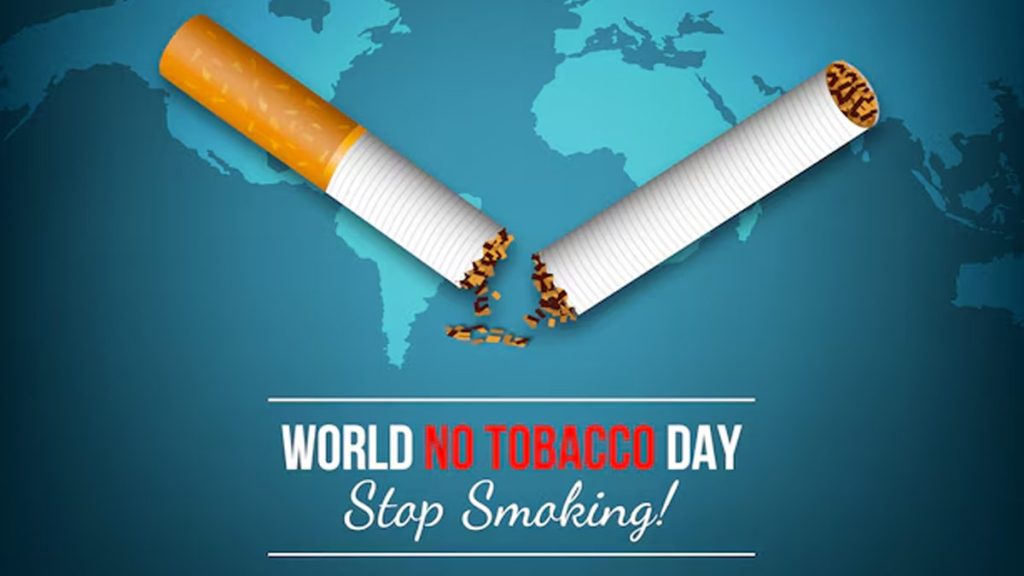Context:
The Ministry of Health and Family Welfare hosted an event on 31st May to observe World No Tobacco Day 2024.
Key Highlights
Theme of World No Tobacco Day 2024
- This year’s theme, “Protecting Children from Tobacco Industry Interference,” emphasizes the critical need to shield youth from the harmful influences of tobacco consumption.
Action Plans
- As stated by the World Health Organization (WHO), tobacco consumption is a leading cause of death and illness in India, contributing to an estimated 1.35 million deaths every year.
- India’s commitment to enforcing the WHO Framework Convention on Tobacco Control was reiterated.

World Health Organization (WHO)
- Established in 1948, WHO is the specialized agency of the United Nations that focuses on international public health matters.
- Headquarters: Geneva, Switzerland
- Mission: Its mission is to promote health, keep the world safe from health emergencies, and serve the vulnerable populations around the world.
Focus Areas for 2024
- The event outlined key areas for tobacco control initiatives in 2024, including strict enforcement of India’s National Tobacco Control Law (Cigarettes and Other Tobacco Products Act, 2003), intensified awareness campaigns, promotion of tobacco-free educational institutions, and the establishment of tobacco-free villages nationwide.
Appointment of Brand Ambassador
- Indian badminton champion Ms. PV Sindhu was appointed as the brand ambassador for Tobacco Control to motivate young children and youth to steer clear of tobacco in all forms.
Regulatory Measures and Policy updates
- It spotlighted India’s regulatory efforts, such as extending TV and film rules to OTT platforms and regulating anti-tobacco warnings on streaming platforms.
Online Pledge Campaign
- The Ministry launched an online “No Tobacco Pledge” campaign through the MyGov platform, encouraging widespread participation in tobacco-free initiatives.
About World No-Tobacco Day
- Initiated by the WHO in 1987 as “World No Smoking Day” aimed to encourage tobacco users to quit.
- The following year, May 31 was established as World No Tobacco Day, marking an annual global observance.
- Its objective is to raise awareness about tobacco’s health hazards and urge stringent measures to combat its use, especially among youth.
- By 2008, World No Tobacco Day became a platform for advocating a comprehensive ban on all tobacco products and related advertising, particularly to counter the influence of tobacco companies targeting vulnerable populations.
Initiatives taken by India to discourage Tobacco consumption
- Enactment of the “Cigarettes and other Tobacco Products (Prohibition of Advertisement and Regulation of Trade and Commerce, Production, Supply and Distribution) Act, (COTPA) 2003.
- Ratification of WHO Framework Convention on Tobacco Control (FCTC) in 2004, the first-ever international public health treaty focusing on the global public health issue of tobacco control.
- Launch of the National Tobacco Control Programme (NTCP) in the year 2007-08 with the aim to create awareness about the harmful effects of tobacco consumption, reduce the production and supply of tobacco products, ensure effective implementation of the COTPA, 2003, and facilitate implementation of strategies for prevention and control of tobacco advocated by WHO-FCTC
- Issuance of the Food Safety and Standards (Prohibition and Restrictions on Sales) Regulations, 2011 dated 1st August 2011, under the Food Safety and Standards Act, 2006, which lays down that tobacco and nicotine shall not be used as ingredients in any food products.
Mandatory display of larger pictorial warnings covering 85% of the principal display area on all tobacco products from 1 April 2016.
- According to the Cigarette Package Health Warnings: International Status Report 2018, India ranks 5th among 206 countries in terms of the largest pictorial warning on cigarette packs.
- Timor-Leste has the largest warnings on cigarette packages in the world with 92.5 per cent on front and back, followed by Nepal and Vanuatu with 90 per cent and New Zealand at fourth with 87.5 per cent.

